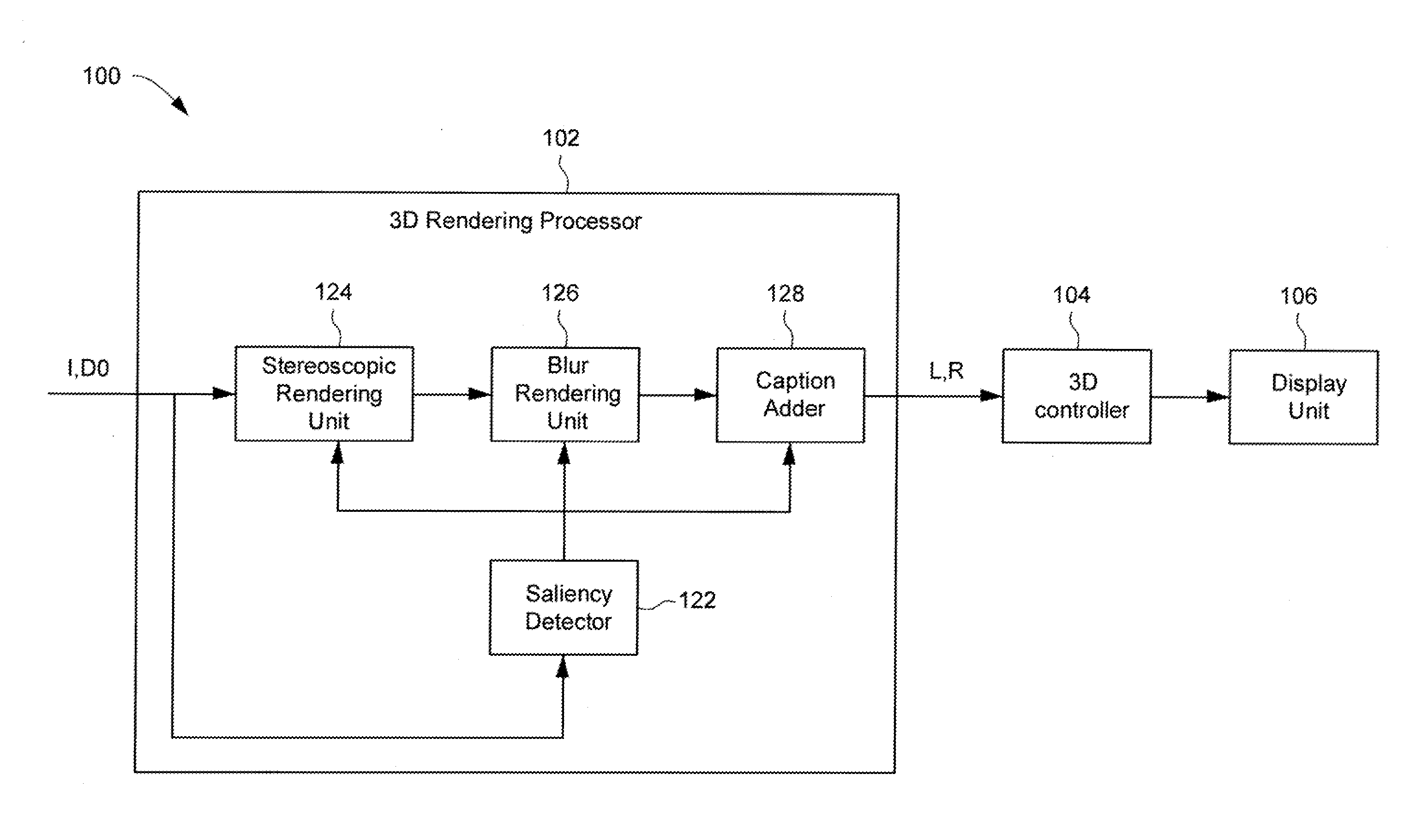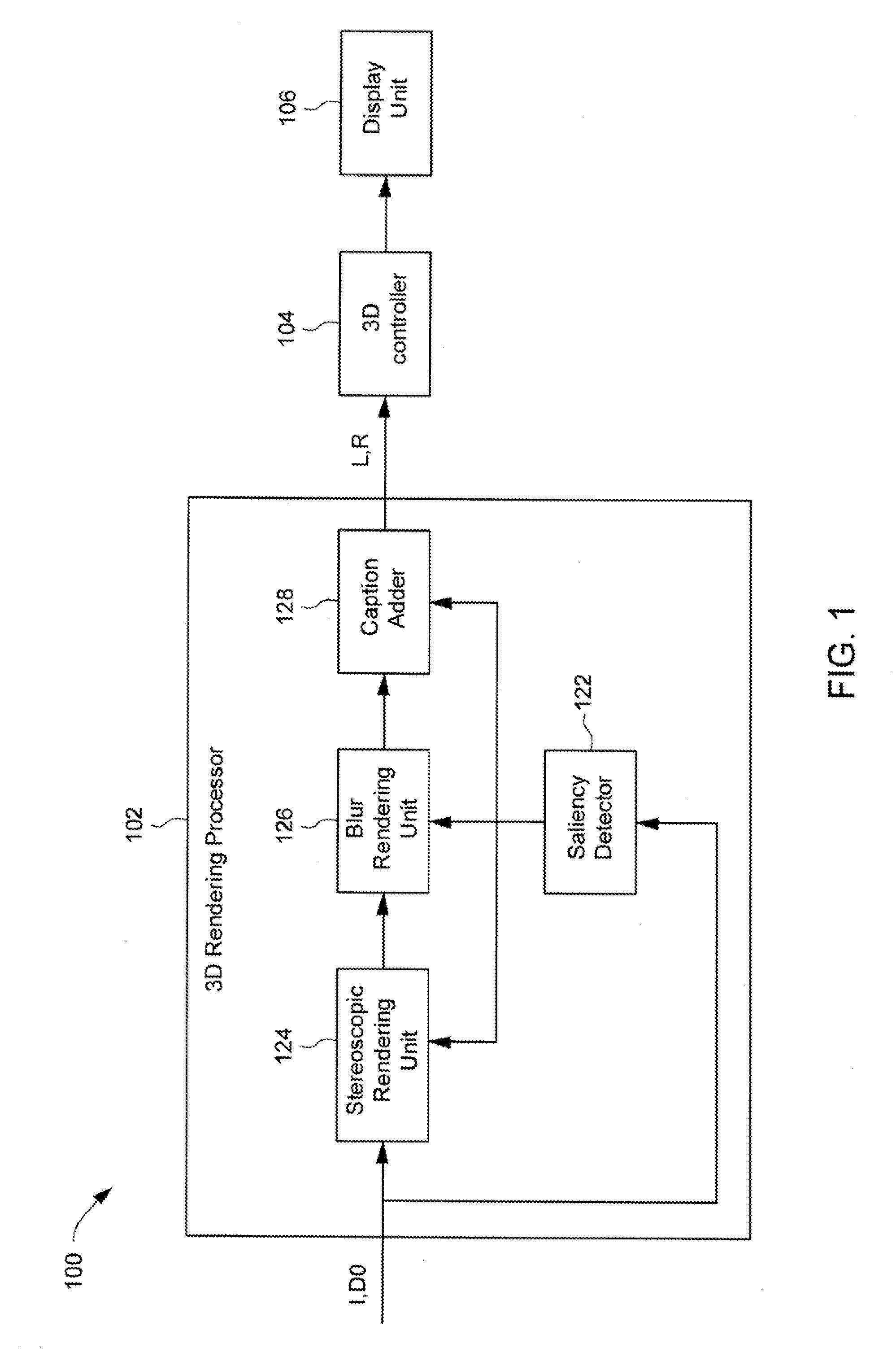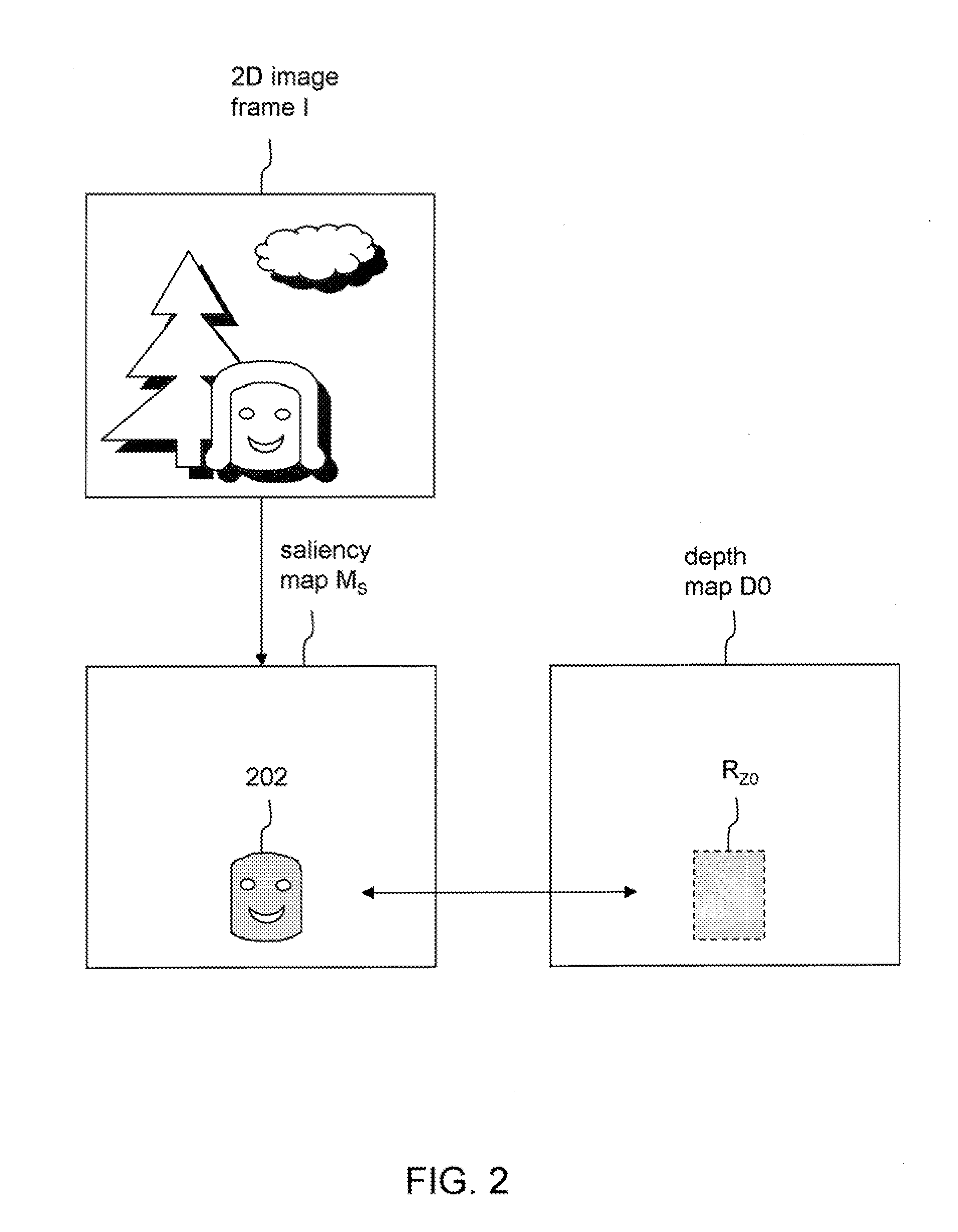System and Method of Rendering Stereoscopic Images
a stereoscopic image and system technology, applied in the field of systems and methods of rendering stereoscopic images, can solve the problems of fatigue and discomfort, difficulty in merging binocular images,
- Summary
- Abstract
- Description
- Claims
- Application Information
AI Technical Summary
Benefits of technology
Problems solved by technology
Method used
Image
Examples
first embodiment
[0026]FIG. 3 is a schematic diagram illustrating a first embodiment for modifying the depth map D0 to redistribute the depth of the identified object of focus 202. The representation of FIG. 3 is taken in a plane perpendicular to the plane of a display screen 140 of the display unit 106. The depth dimension can be exemplary represented along a horizontal axis Z perpendicular to the plane of the display screen 140. In one embodiment, the depth map D0 can be converted into an adjusted depth map D1 by offsetting / shifting the range of depth values RZ0 associated with the object of focus 202 toward a depth level ZS of the display screen 140. Suppose that Zi′ is a depth value in the adjusted range of depth values RZ1 in the depth map D1, and Zi is a depth value in the range of depth values RZ0 in the depth map D0, the relationship between Zi′ and Zi can be according to the following formulae:
Zi′=Zi+C1 (1),
[0027]wherein the constant value C1 defines the offset of the range of depth values...
second embodiment
[0030]FIG. 4 is a schematic diagram illustrating a second embodiment for modifying the depth map D0 to redistribute the depth values associated with the identified object of focus 202. The depth map D0 can be converted into a depth map D2 by compressing all of the depth values contained in the depth map D0 toward the depth level ZS of the display screen 140. For example, suppose that the range of depth values RZ0 in the initial depth map D0 is approximately centered about the depth level ZS of the display screen 140. The adjusted depth map D2 may be obtained by applying a compression operator on the initial depth map D0 such that the range of depth values RZ0 can be shrunk into the range of depth values RZ1 substantially centered about the display screen 140. In one embodiment, suppose that Zi′ is a depth value in the range of depth values RZ2 in the depth map D2, and Zi is a depth value in the range of depth values RZ0 of the depth map D0, the relationship between Zi′ and Zi can be...
PUM
 Login to View More
Login to View More Abstract
Description
Claims
Application Information
 Login to View More
Login to View More - R&D
- Intellectual Property
- Life Sciences
- Materials
- Tech Scout
- Unparalleled Data Quality
- Higher Quality Content
- 60% Fewer Hallucinations
Browse by: Latest US Patents, China's latest patents, Technical Efficacy Thesaurus, Application Domain, Technology Topic, Popular Technical Reports.
© 2025 PatSnap. All rights reserved.Legal|Privacy policy|Modern Slavery Act Transparency Statement|Sitemap|About US| Contact US: help@patsnap.com



